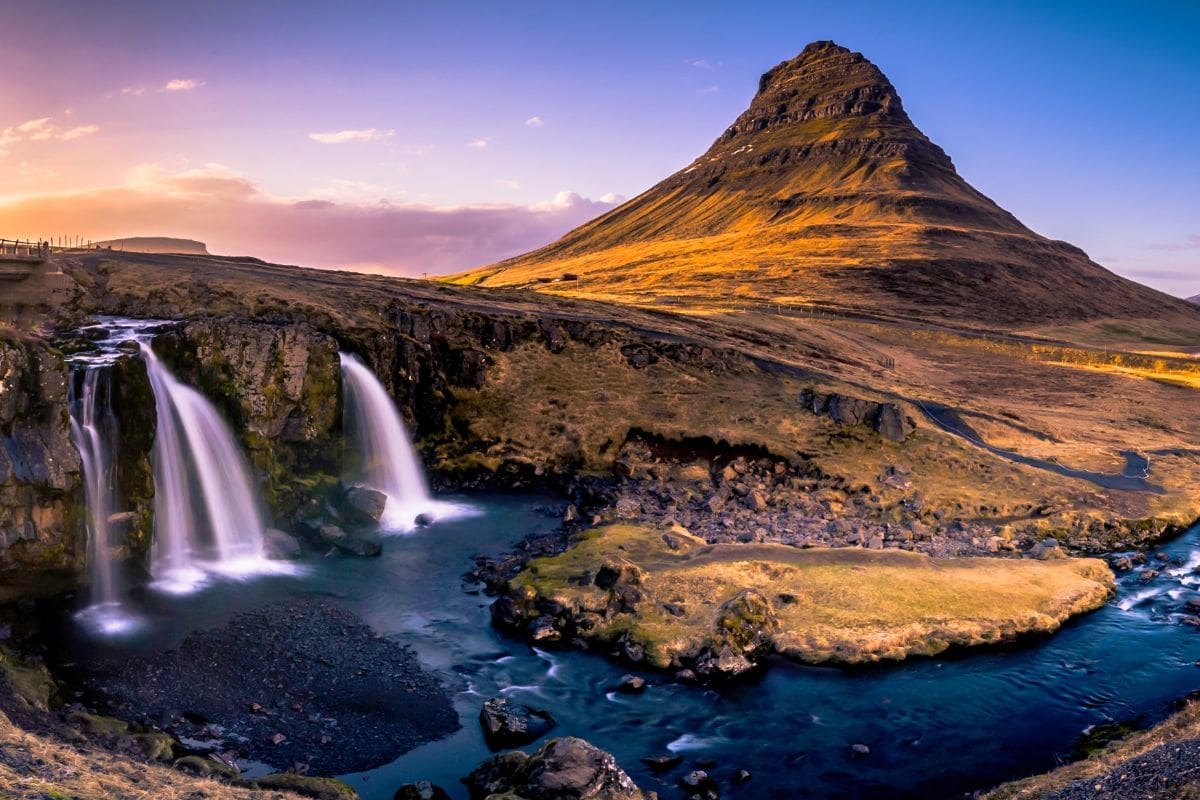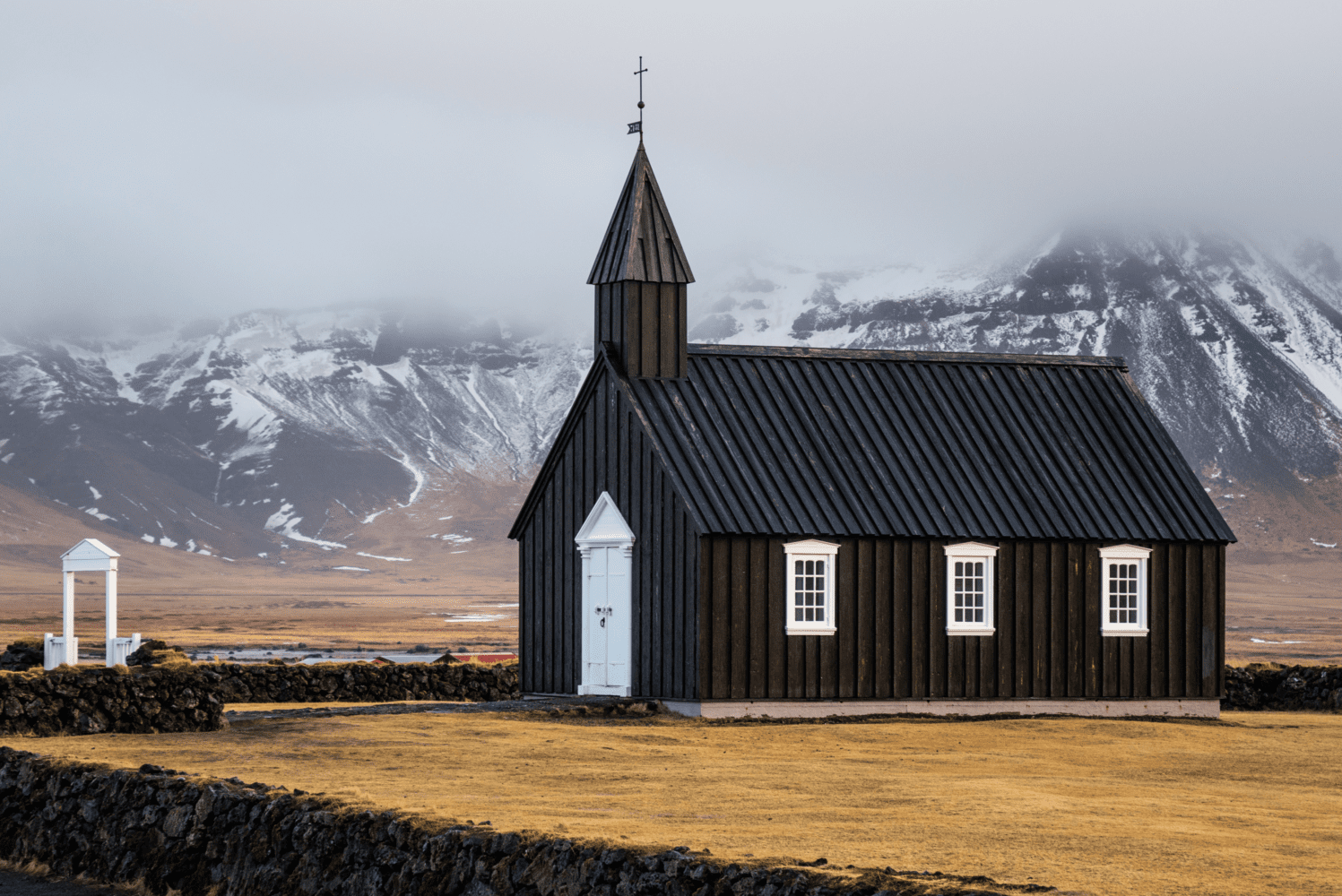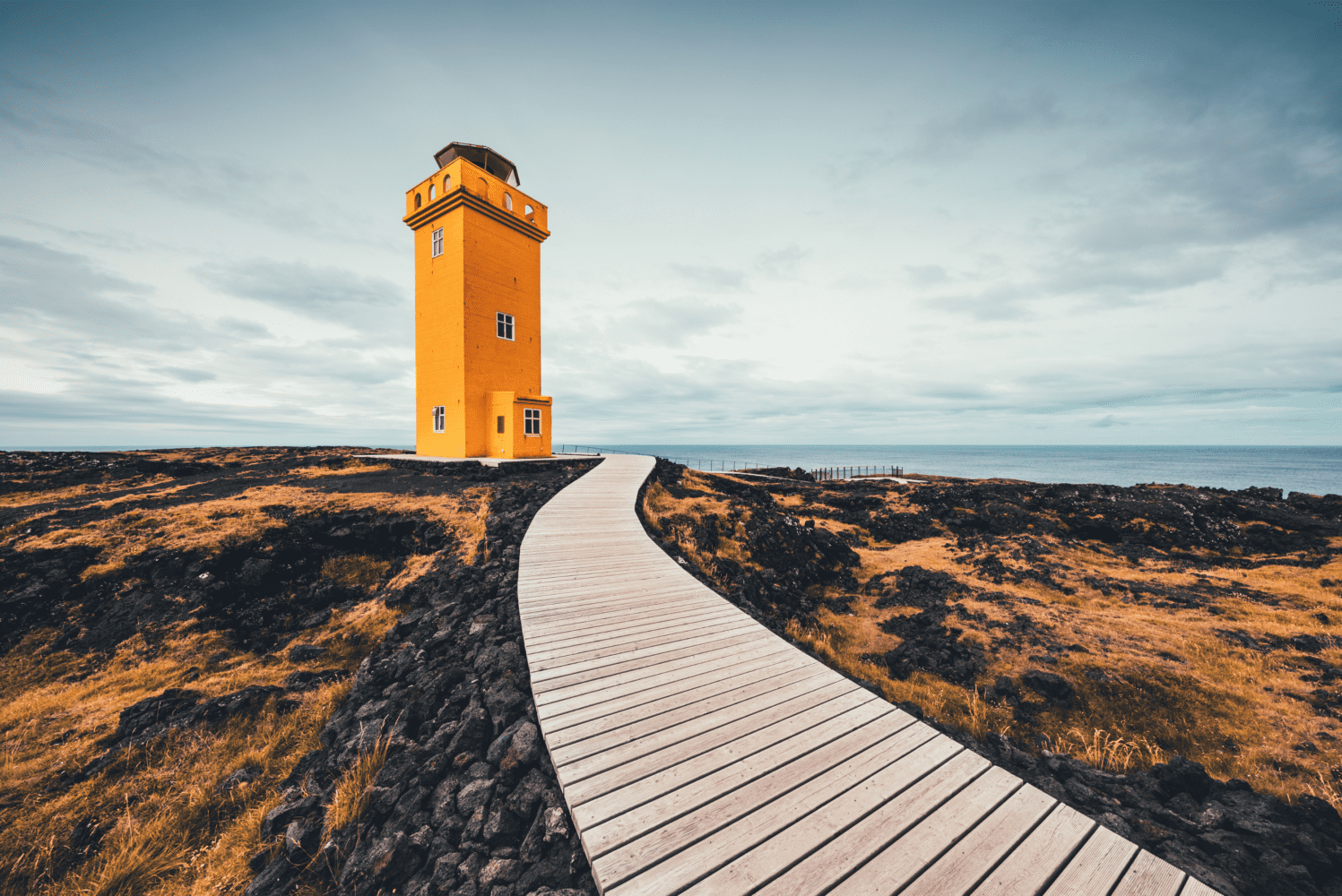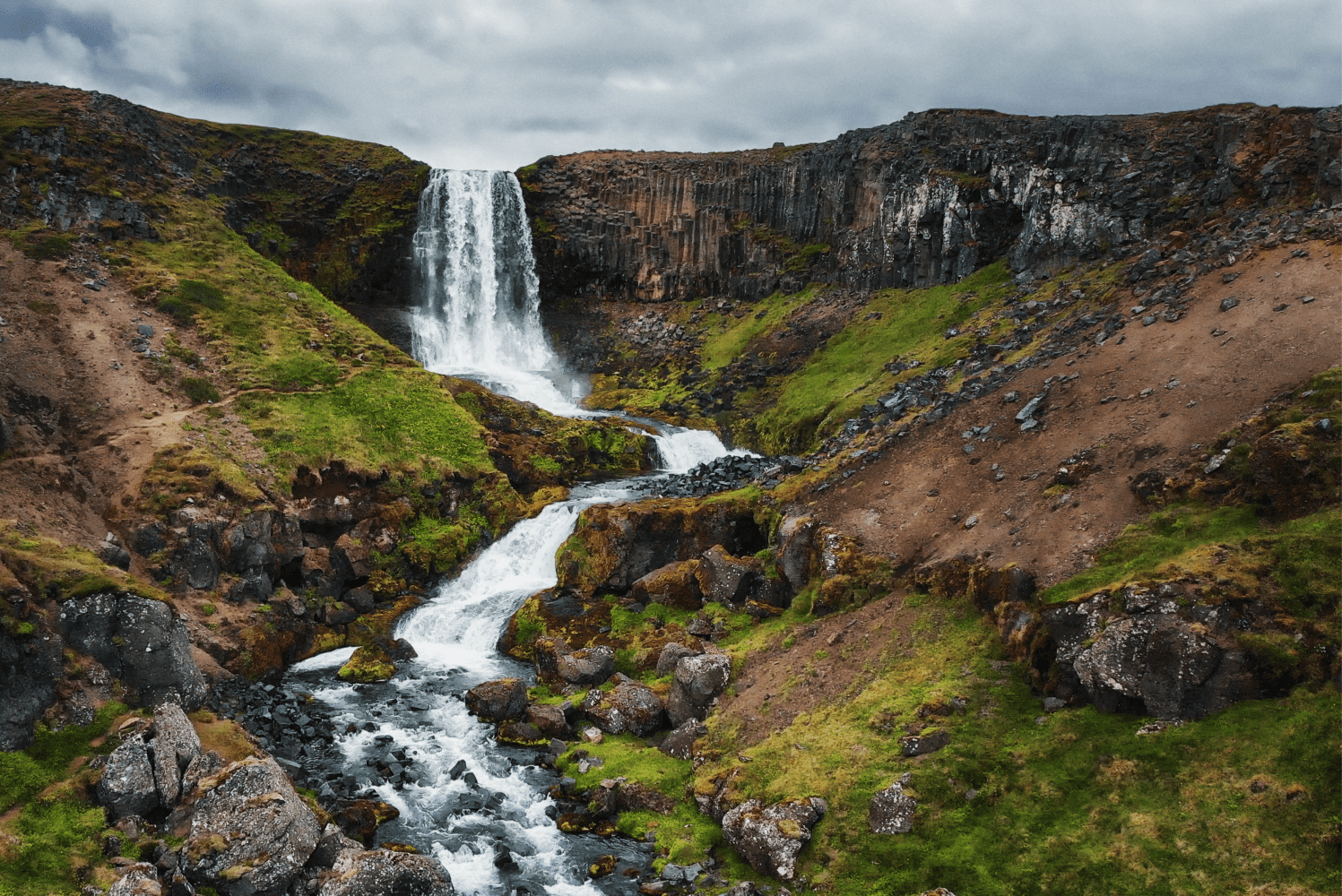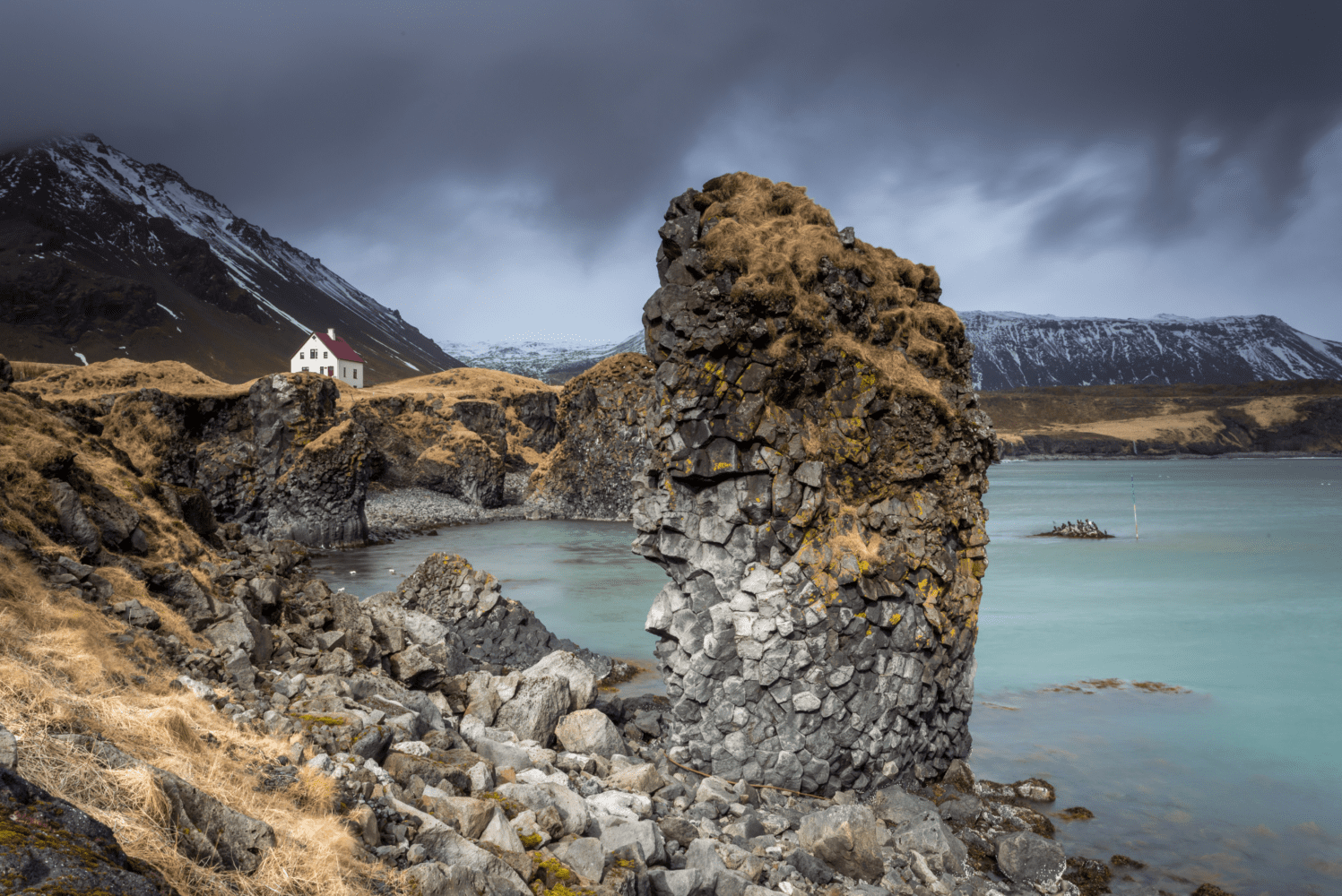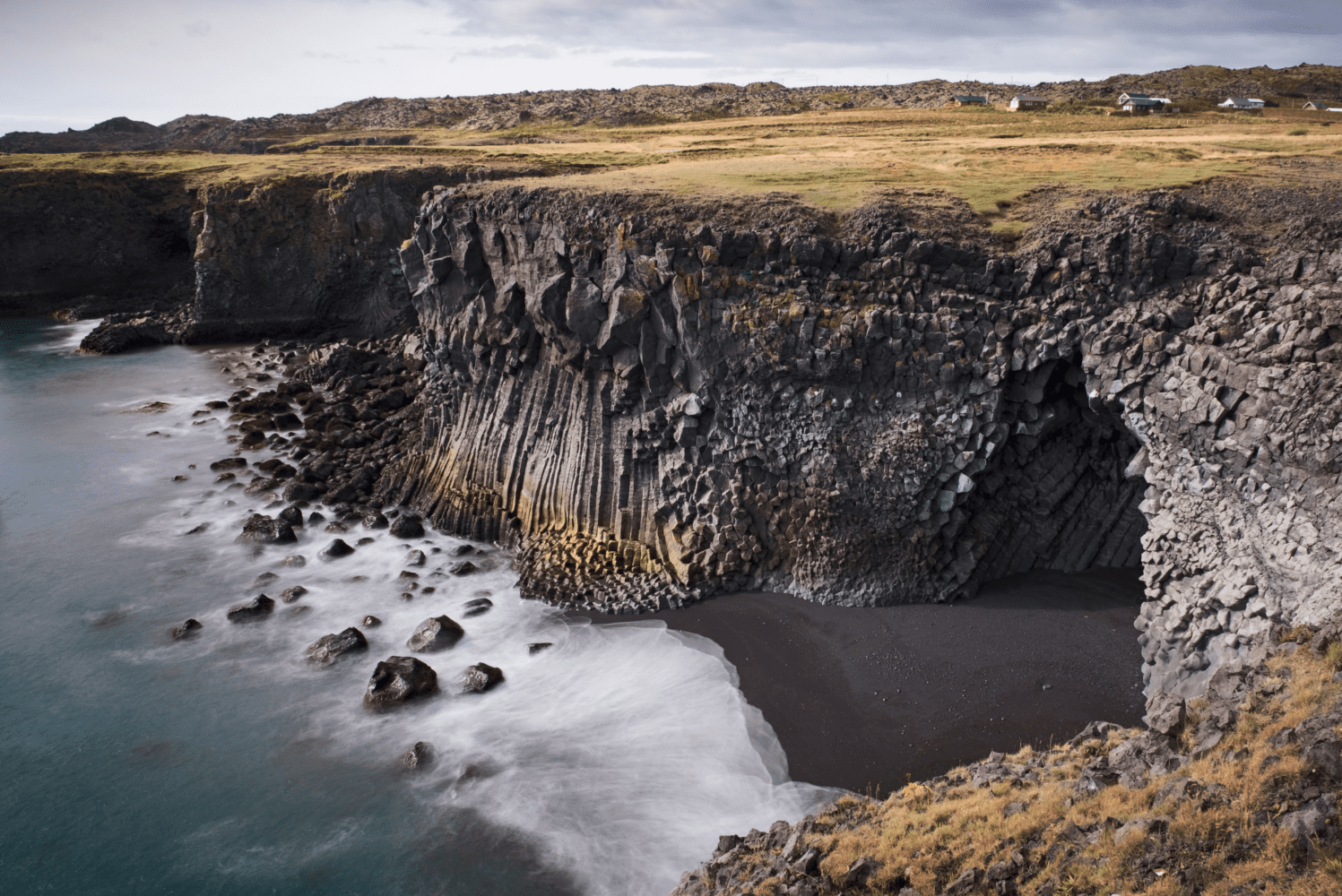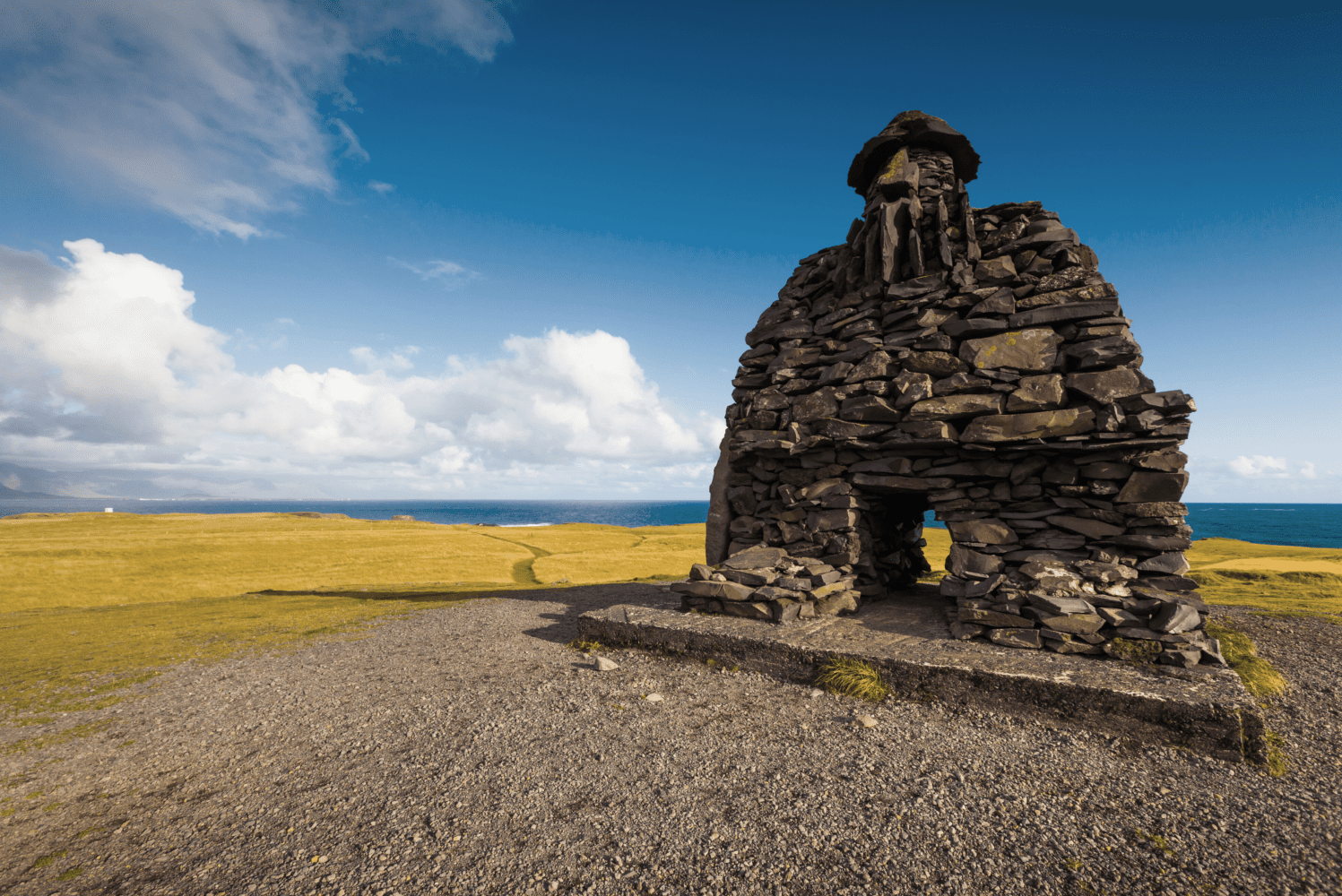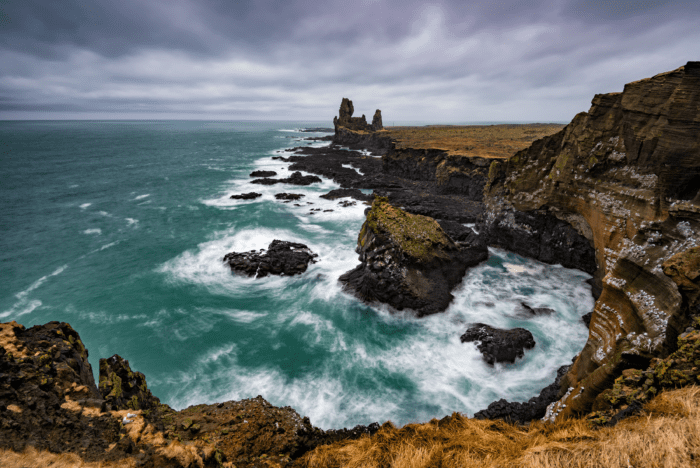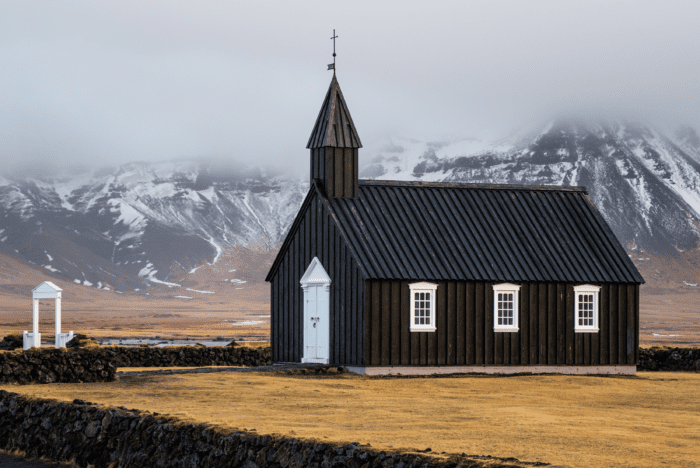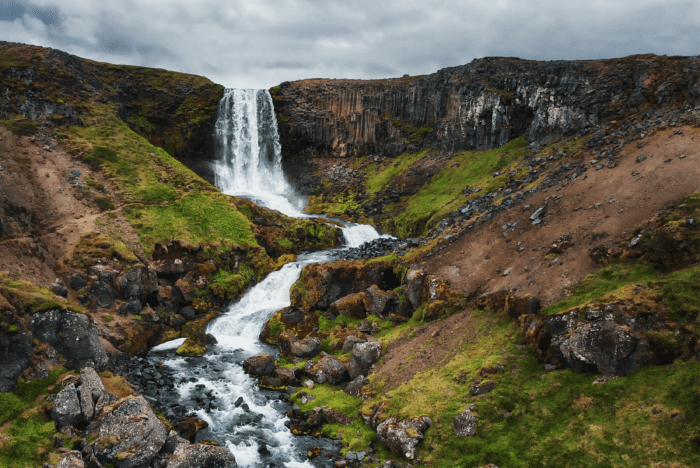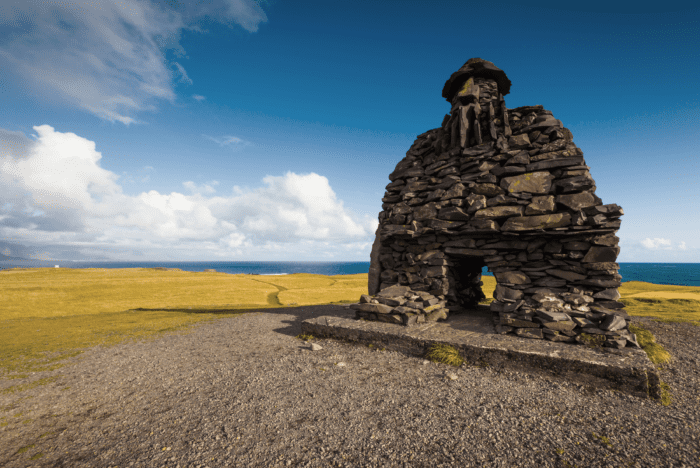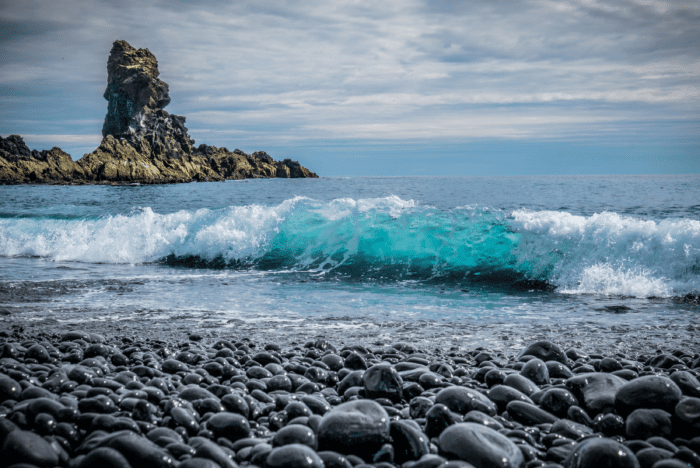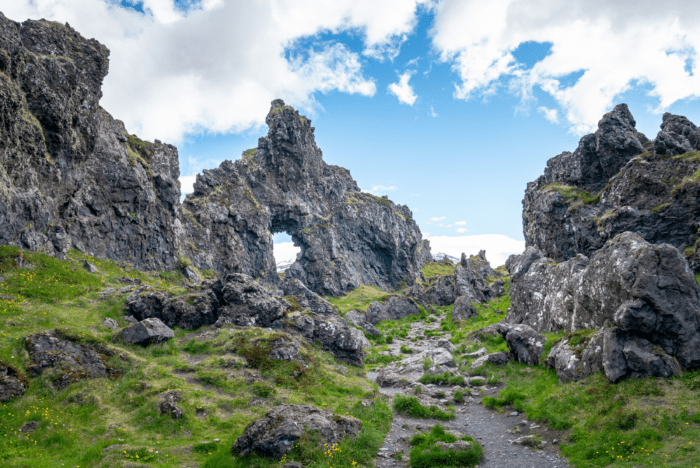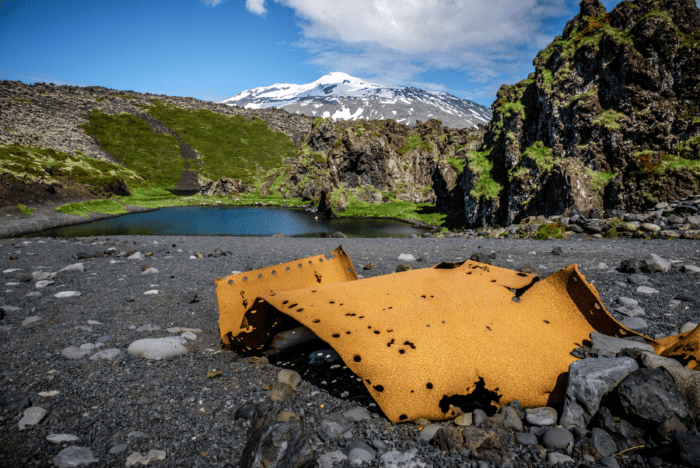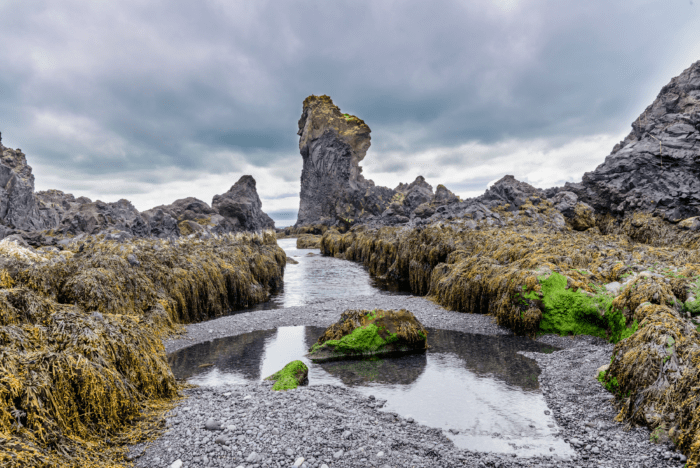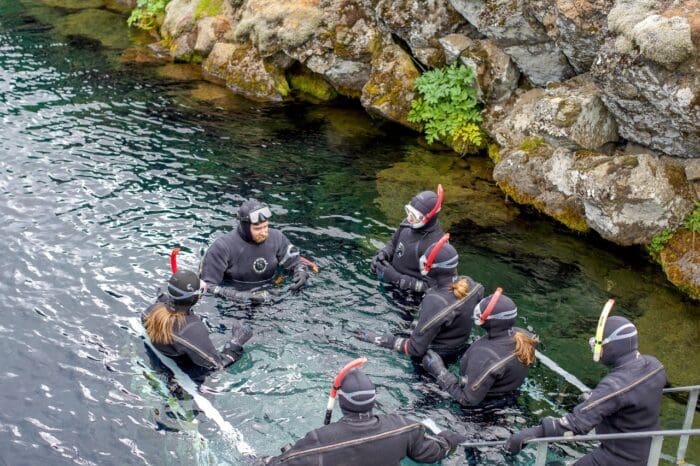
Private Snæfellsnes Peninsula Tour
Experience the energy of the mystical "Iceland in miniature" Snæfellsnes peninsula with the comfort of a private tour and make the most of your day by choosing from various bookable activities to add.
Please note:
The weather can be unpredictable in Iceland so during winter you may expect us to occasionally need to alter the tour itinerary if weather/road conditions are unfavorable.
Available: All year
Duration: Approx. 12hrs, depending on your time spent at each stop and the duration of any activity added.
Pick-up: From your hotel/accommodation within the Reykjavik Capital Area.
Highlights
- Vatnaleið path
- Grundarfjörður town
- Ólafsvík fishing village
- Skarðsvík golden sand beach
- Öndverðernes cape
- Djúpalónssandur black pebble beach
- Lóndrangar rock pinnacles
- Hellnar & Arnarstapi twin fishing villages
- Búðir village
- Ytri-Tunga seal colony beach
Description
Snæfellsnes is a peninsula that possesses a great diversity of what Iceland has to offer. Its unique landscapes of rugged moss-grown lava fields, charming little fishing villages by the coastline, and wealth of remains and history dating back to the period of settlement and the formation of Iceland, makes for a whole day of "Iceland in miniature". The Snæfellsnes National Park is the first national park in Iceland to stretch from the top of a mountain with its boundaries reaching out into the ocean. At the far end of the Snæfellsnes National Park stands the renowned glacier Snæfellsjökull, believed to be one of the seven energy centers or chakras of the world due to the great powers and energy that many people sense when in its presence. It plays a big role in Jules Verne's science fiction Journey to the Center of the Earth published in 1864, and a movie of the same name in 2008 starring Brendan Fraser and the Icelandic actress Anita Briem.
Getting to the Snæfellsnes peninsula, we will head from the Reykjavik Capital Area to the Hvalfjörður fjord and drive through the Hvalfjarðargöng underground road tunnel, the first underwater tunnel to be built in Iceland and among the longest underwater road tunnels in the world. Before we get to Snæfellsnes we'll drive over Borgarfjarðarbrú bridge, the second-longest bridge in Iceland, and make a stop in the town of Borgarnes for refreshments and restrooms, and to stretch our legs. After driving past a lot of beautiful farmsteads we turn on to Vatnaleið, a mountain pass between the north and south coasts of the Snæfellsnes peninsula, and stop at a rest stop by the Fossá river. From there you will have a vast view over the Selvallavatn lake surrounded by the 4,000-year-old rugged Berserkjahraun lava field which was created in an eruption of a row of four scoria craters. A short walk from the rest stop takes you to the two-ledged Selvallafoss waterfall which is also known as Sheep's Waterfall due to sheep sometimes resting on a ledge behind it. We drive a bit further and stop by one of the scoria craters that created Berserkjahraun, the high and wide Grákúla. It derives its name from the grey moss covering this otherwise beautifully red-colored crater. Now we make another turn and drive through the lava fields of Berserkjahraun to reach Grundarfjörður, the environmentally-conscious fishing town which lies by the roots of the very picturesque Kirkjufell mountain. If you're a Game of Thrones fan, you will immediately recognize this mountain as Arrowhead Mountain in seasons 6 and 7. Along with the small waterfall Kirkjufellsfoss, this pair makes for the main attraction and landmark of Grundarfjörður and one of the most photographed locations in Iceland. Next, we drive by the shore to the old market town Ólafsvík which used to be one of the largest trading posts in Iceland. We highly recommend having your lunch at our favorite restaurant here which offers a range of delicious courses with freshly caught fish from the harbor (and for those who are vegan, they also have a variety of great vegan dishes on their menu). After a short drive from Ólafsvík, we stop by a parking lot for a short walk to a viewing platform to admire the beautiful waterfall Svöðufoss, falling gracefully off a basalt-columned cliff.
Now we reach the far end of Snæfellsnes and stop by the beautiful beach Skarðsvík which is different from the black beaches of Iceland. This secluded beach has golden sand surrounded by deep black fractured basalt columns and a bright aquamarine-colored ocean. Further west we stop by the first lighthouse of the day on the cape Öndverðarnes. For over 700 years since the 13th century, this was an old fishing station with a lot of fishermen's huts and a chapel on-site. Old relics and ruins from that time can be found in the area, but now the small orange-colored lighthouse Öndverðarnesviti stands on its westernmost point. South of it stands another orange lighthouse with two names; Svörtuloftaviti when seen from the sea and Skálasnagaviti on land. The coastline between these lighthouses is called Svörtuloft or Black Ceilings, deriving from the steep pitch-black lava cliffs that a lot of ships have crashed on and shattered in extreme weather. We now drive alongside the main landmark of the Snæfellsnes peninsula – the glacier cap Snæfellsjökull. Dominating the area, this mysterious glacier is said to keep great secrets. It is believed that the half-man half-troll and protector of Snæfellsnes Bárður Snæfellsás lives in it, disappeared after a tragedic family accident. Snæfellsjökull is an active volcano that last erupted 1,8000 years ago, so on top of this 1,446 m high glacier sits a 200 m deep crater bowl. We continue our way to the black pebble beach of Djúpalónssandur. A walking path through a lava field takes you to this magnificent beach with remains from the 1948 shipwreck of the British fishing trawler Epine GY7 scattered around. Both the pebbles of this beach and the shipwreck are protected, so they are to be kept there and not removed. Please admire this scenic area carefully and mind the strong waves coming ashore. Another shore close by gives you an amazing view of various cliff formations from an observation deck, all the to the abandoned farming area Malarrif where the 24 m high lighthouse Malarrifsviti stands. By the observation deck is the palagonite headland Svalþúfa with a cliff called Þúfubjarg beneath which is home to various nesting sea birds. Standing just out of the shore are the two rock pinnacles Lóndrangar, believed to be the elves' church and their library.
Next are the twin villages of Hellnar and Arnarstapi. Hellnar was a large old fishing station dating back to 1560 but now only a few people live there. A cozy little café by the beach Hellnafjara is popular for the great views it offers from its patio and down by the beach is the remarkable cave Baðstofa inside the protruding boulder Valasnös. Its magical uniqueness lies in the coloration inside formed by the tides and different lightning hitting the scales of rocks inside. Arnarstapi is a small fishing village with strange rock formations along its coastline and cliffs filled with nesting sea birds. First, you're greeted by the huge statue of Bárður Snæfellsás, the aforementioned protector of Snæfellsnes. Then a walking trail takes you along the coastline for admiring various lava and basalt formations. The rock arch Gatklettur extends from the cliffs with a big hole through, and further along, are three holes in the ground with the ocean coming in and basalt cliffed walls with sea birds nesting on some days the strong ocean waves splash up into the air from these ravines. Nearing the end of this tour, we drive through farmlands by lava fields, and one of these farms was the home of a notorious killer. Axlar-Björn was the first serial killer in Iceland AND is still the only one. He lived on the farm Öxl in the 16th century, where he would kill travelers passing by with an axe. Hiding their bodies in the cowshed, killed 9 people and kept their belongings until one traveler managed to escape. That led to the arrest of Björn who was sentenced to death. Before he was beheaded, his limbs were crushed with a sledgehammer and his body was cut down and put up on poles, and then his body parts were dug in three graves, to prevent him from returning to haunt the living, with cairns on top. One of these cairns still stands in a lava field by Hellnar and is declared protected. After we've passed Öxl we turn to the very small village of Búðir by the edge of the pitch-black Búðahraun lava field. One of the most photographed churches in Iceland is the black wooden Búðakirkja church with its white window and door frames and a stonewall around its graveyard. It's a replica of the former church and the only reminder left of this former vibrant fishing village. Further down is a green-yellowish beach of olivine sand, which is very rare in the world. We make our way to our last stop which is the golden sand beach Ytri-Tunga. It has a large seal colony and is very popular for seal watching, especially over summer. Two seal species, the harbor seal and the grey seal reside here peacefully in harmony. Seals used to be vital for the survival of Icelanders, but now it is prohibited to hunt these beautiful creatures in Icelandic territory.
Activities
When booking this tour, you can choose from our standard tour (for shorter activities to add) or our extended tour (for longer activities to add). The following are the extra bookable activities available to add to your booking during the check-out process (please only add one activity to your booking):
Available to add to the standard tour:
- Horseback riding by Snæfellsjökull (available only June 1 – Sep 15)
- Kayak by Kirkjufell mountain (available only May 1 – Sep 30)
- Vatnshellir Lava Cave tour (available all year)
Available to add to the extended tour:
- Snowcat on Snæfellsjökull glacier (available only April 10 – Aug 31)
- Parking fees
- Pickup & drop-off within the Reykjavik Capital Area
- Private transport in an air-conditioned vehicle
- Knowledgeable & experienced English-speaking driver-guide
Vatnaleið is a mountain pass between the north and south coasts of the Snæfellsnes peninsula. It first opened in 2001, superseding the gravel road over the Kerlingaskarð pass. A rest stop by the river Fossá on this route has tables and chairs made from basalt rocks which were found during the construction of Vatnaleið. From there you have a vast view over the lake Selvallavatn and the surrounding lava field and mountain rows. A short walk up the Fossá river takes you to a two-ledged waterfall called Selvallafoss – also known as Sheep’s Waterfall due to sheep sometimes resting on a ledge behind it. Further down this route is the 80 m (262 ft) high and 211 m (629 ft) wide scoria crater Gráakúla (mistakenly called Grákúla by some) which formed over 4,000 years ago. Being red, it is also covered with grey moss which gives its name (Grákúla = e. Grey Bump). It is the second-largest crater in a row of four scoria craters that erupted over 4,000 years ago, with lava flowing in the NW direction creating the rugged Berkserkjahraun Aa lava field. The eruption of Grákúla created the Selvallavatn lake situated just south of the crater.
- Please respect nature – do not throw out trash or walk on any moss.
- For environmental responsibility purposes, you do not need to print out your e-ticket.
- Your private driver-guide can always recommend different restaurants in the area and make stops on the way so you can purchase food/snacks/drinks, but you are also welcome to bring a packed lunch.
- The total duration of this tour is dependent on whether extra bookable activities are added to the booking during checkout.
- Road conditions or adverse weather could make some stops inaccessible during winter, so the itinerary may need to be altered if necessary.
- Dress according to the weather by wearing warm and wind-/waterproof clothing in layers and bring gloves and a hat.
- Wear suitable footwear, preferably waterproof with a good grip, in case of slippery conditions due to ice, rain, or gravel paths.
- We may occasionally need to alter the tour itinerary due to unpredictable weather and road conditions in Iceland, especially during winter. The weather in Iceland can be quite unpredictable.
- Difficulty:
- Easy
- Duration:
- 14 hours
- Price From:
- 240.000 ISK
